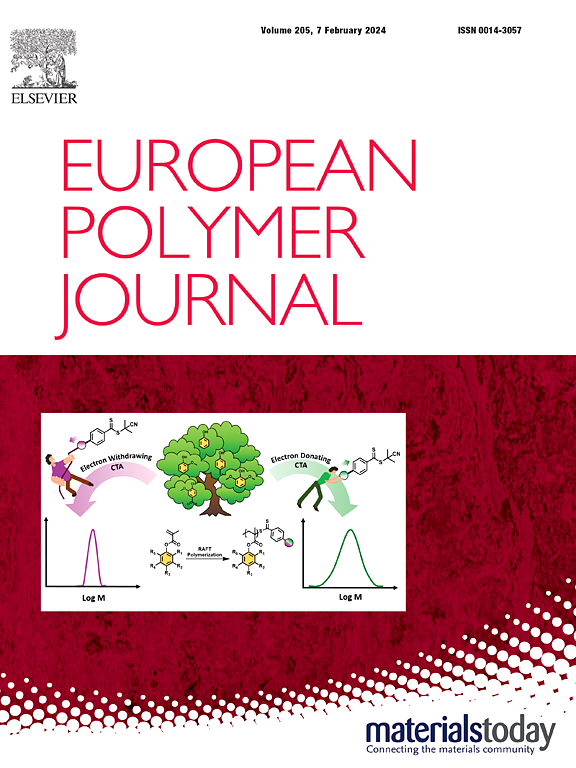Photopolymerization initiated by aggregation-induced emission (AIE) dyes: Towards design of fluorescent photocatalysts with hybridized excited state
IF 5.8
2区 化学
Q1 POLYMER SCIENCE
引用次数: 0
Abstract
Despite the truth that organic chromophores were deeply investigated as light-harvesting photocatalysts (PCs) or photoinitiators (PIs), innovative designs on the photoredox catalysts with specific photophysical/chemical characteristics, for instance, chromophores with clear hybridized excited state or aggregation-induced emission (AIE) are rarely reported to conduct visible-light induced polymerization. Here, we newly designed four chromophores as PCs in photopolymerization, with Donor-Acceptor structure and hybrid local and charge-transfer (HLCT) states, in order to provide diradicals with moderate concentrations while inducing the photopolymerization of acrylate monomers under separate light sources with different wavelengths. As results, moderate spin–orbit coupling (SOC) coefficients may assist to depress the retardation or inhibition of photopolymerization processes, which enables to efficiently induce free radical photopolymerization of acrylate monomer upon light irradiation. What’s more, two of them are recognized as typical AIE dyes, direct laser write experiments were thus performed on AIE dye-induced photopolymerization, especially for the water-soluble resin, poly(ethylene glycol) diacrylate (PEGDA), which seems to expand their applications in bio and medical fields as perspective.

求助全文
约1分钟内获得全文
求助全文
来源期刊

European Polymer Journal
化学-高分子科学
CiteScore
9.90
自引率
10.00%
发文量
691
审稿时长
23 days
期刊介绍:
European Polymer Journal is dedicated to publishing work on fundamental and applied polymer chemistry and macromolecular materials. The journal covers all aspects of polymer synthesis, including polymerization mechanisms and chemical functional transformations, with a focus on novel polymers and the relationships between molecular structure and polymer properties. In addition, we welcome submissions on bio-based or renewable polymers, stimuli-responsive systems and polymer bio-hybrids. European Polymer Journal also publishes research on the biomedical application of polymers, including drug delivery and regenerative medicine. The main scope is covered but not limited to the following core research areas:
Polymer synthesis and functionalization
• Novel synthetic routes for polymerization, functional modification, controlled/living polymerization and precision polymers.
Stimuli-responsive polymers
• Including shape memory and self-healing polymers.
Supramolecular polymers and self-assembly
• Molecular recognition and higher order polymer structures.
Renewable and sustainable polymers
• Bio-based, biodegradable and anti-microbial polymers and polymeric bio-nanocomposites.
Polymers at interfaces and surfaces
• Chemistry and engineering of surfaces with biological relevance, including patterning, antifouling polymers and polymers for membrane applications.
Biomedical applications and nanomedicine
• Polymers for regenerative medicine, drug delivery molecular release and gene therapy
The scope of European Polymer Journal no longer includes Polymer Physics.
 求助内容:
求助内容: 应助结果提醒方式:
应助结果提醒方式:


